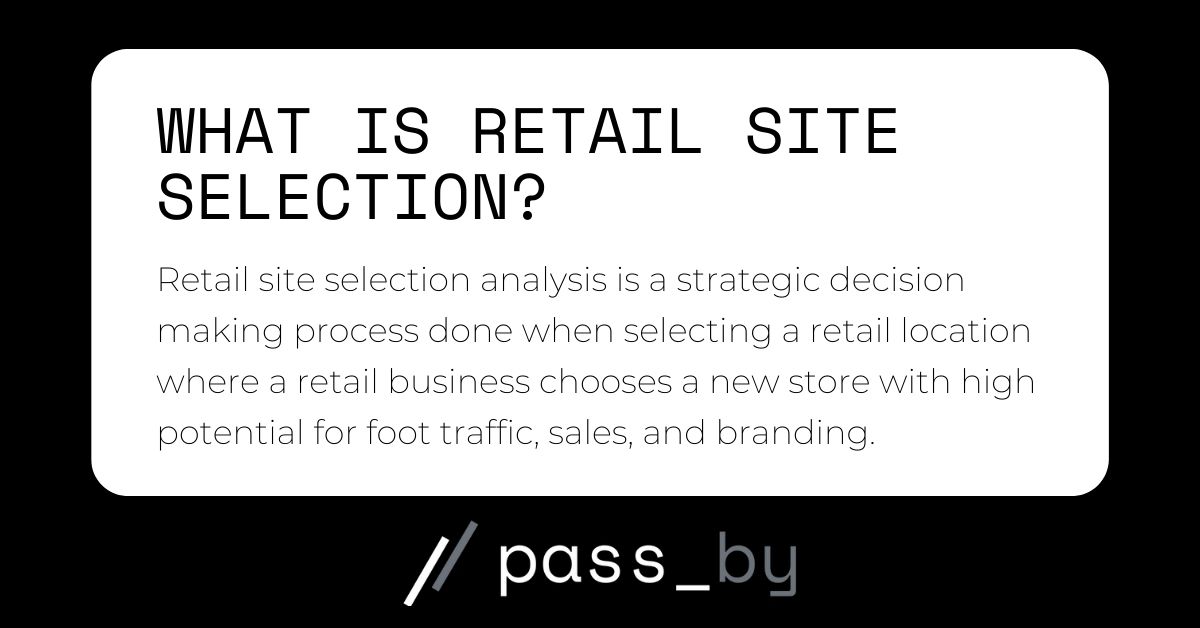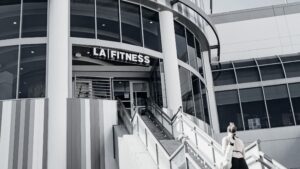Retail site selection analysis is a strategic decision-making process done when selecting a retail location where a retail business chooses a new brick-and-mortar store that has high potential for foot traffic, sales, and branding.
Done correctly, site selection can be the foundation of a successful retail location. To help you achieve this, we’ve compiled factors you will need to consider, made a checklist to follow, and broken down the benefits of the process.
At pass_by, we offer the highest in market accuracy with 94% correlation to ground truth, over 15 data inputs, and a full 90 days of predictive feeds. Book a call now.
Retail site selection criteria: 8 factors to consider
Let’s begin by understanding the factors that you must consider before choosing a site.
These factors are critical as they can significantly impact the profitability of your business. Using retail site selection software can help in compiling all of these factors into a singular report.
- Demand Analysis: Understand the demand for your product or service in the potential area. Is there a sizeable customer base? What are the buying trends? These insights will dictate whether your store will be a hit or miss in this area.
- Competitor Analysis: Use competitive intelligence to analyze your competitors in the vicinity. Are there any major players with whom you’ll be competing directly? How can you distinguish yourself from them to attract customers?
- Cost Factors: Examine any costs related to the site such as lease expenses, taxes, renovation or fit-out costs, maintenance costs, and any other potential expenses.
- Population density: High-density areas tend to have a steady stream of customers throughout the day from nearby public transport stations, offices, schools, and other stores. Less populated areas generally means less foot traffic, but these areas can have lower competition.
- Demographics: Who are your potential customers? Demographic data can tell you more about the age, gender, income, transport, and education levels of consumers in the area.
- Psychographics: What do your potential customers value? Psychographic data can tell you more about a consumer’s personality, values, and traits to better target your strategy and decide if the site is a good fit.
- Co-tenants: Is the site in a mall or retail park? If so, take a look at your would-be neighbors. See if they’re your competitors, how successful they are in this location, and what foot traffic they’re pulling in.
- Foot traffic: Retail foot traffic data is an indicator of sales and success. When selecting a retail site, a benchmark report can help set expectations of what footfall the store could achieve.
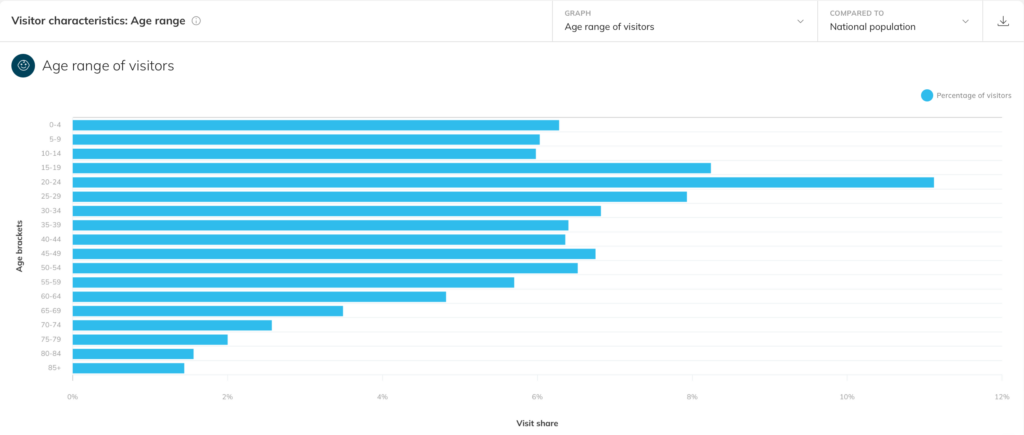
Retail site selection checklist: step-by-step guide to choosing your location
Now that we’ve established the significance of retail site selection, let’s dive further into the step-by-step process of choosing the ideal spot for your retail store. Keep in mind, that thoughtful consideration and strategic planning are essential.
It’s your chance to cultivate your brand’s image, influence shoppers’ behavior, and ultimately, boost your sales.
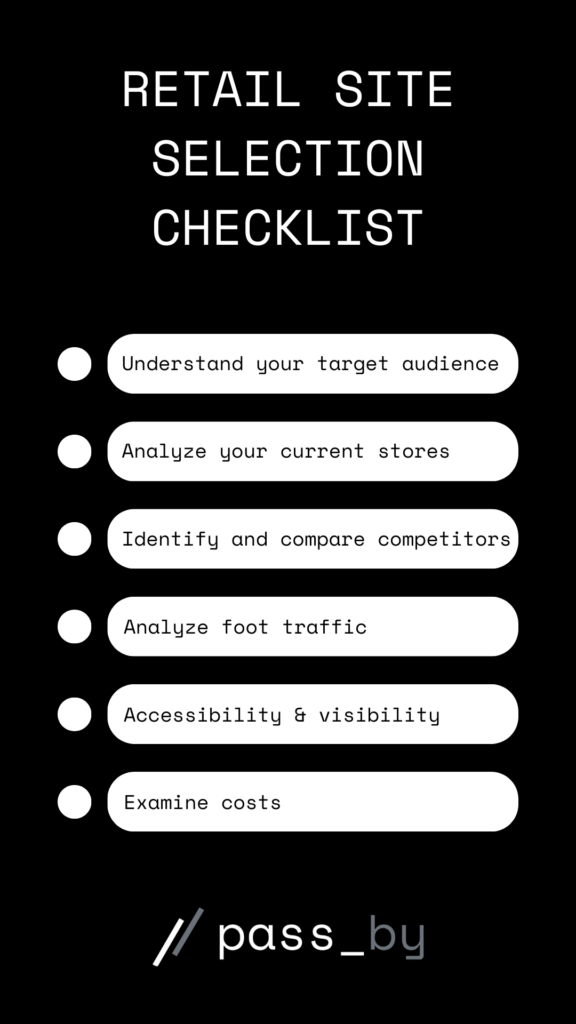
1. Understand your target audience
To begin, you need a deep understanding of your target market. Who you are target customers are will decide which retail sites are the best fit for you.
Identify your core customers and what they value most in a retail experience. This insight will inform your location selection criteria and help you to choose a site that aligns with your customers’ preferences and behaviors.
You can better understand your target audience by:
- Analyzing competitor demographics using a data provider
- Checking your current audience demographics of similar store locations
- Completing a survey
- Interview potential customers
- Collect and analyze social media analytics and website analytics
From there, you can then create customer segments to organize the information and set goals to filter through potential sites.
2. Analyze your current stores
What are your best and worst stores? This can tell you more about which retail sites best match your business, and what’s working and what’s not.
Map out your stores and check there’s little to no crossover; your stores shouldn’t be competing against one another or be too close in a physical location.
Your next site may be in an area far away from your other stores, a popup shop to test a new product or location, or on the opposite end of a city where one of your best stores is already located to capitalize on demand.
You won’t get an early idea of this until you’re certain of your current store locations and performance.
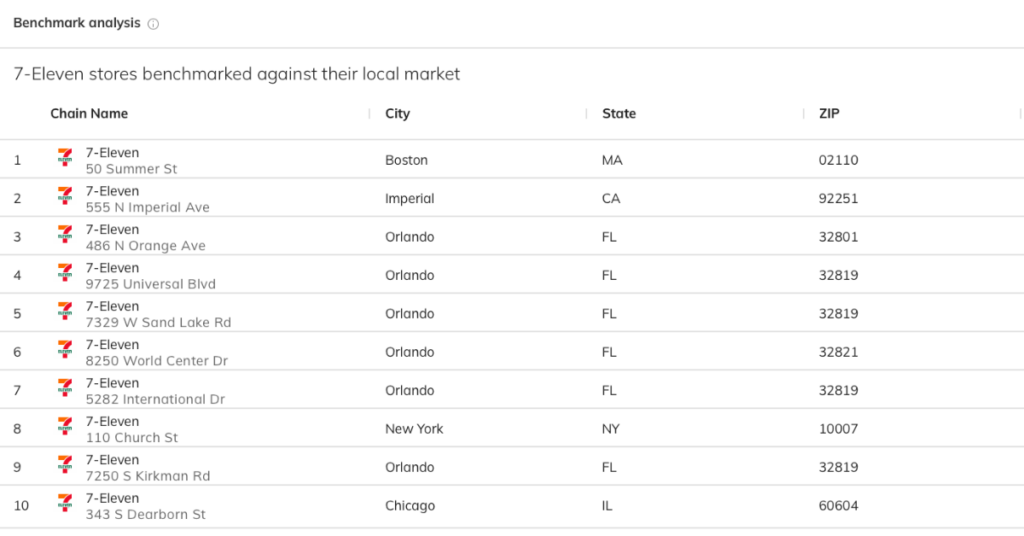
3. Identify and compare competitors
Once you’ve got a firm grasp on who your target audience is, and you’ve carefully analyzed your existing stores, it’s time to turn your attention to the competition.
By identifying who your direct competitors are, you’re already one step ahead in understanding the lay of the land. The process of gathering and analyzing this data is called competitive intelligence.
- Identify your current direct competitors and identify their retail locations
- Consider competitors who share a similar customer base and local businesses
- Discover businesses that complement yours, such as a smoothie or juice bar near a potential gym site
Once you’ve identified your competitors, you can analyze their stores and check their locations when you’ve found a site of interest.

4. Analyze foot traffic
Foot traffic is a key indicator of potential sales. A site with high levels of foot traffic often translates to increased exposure and potential customers.
Consider things like nearby popular destinations and the area’s busiest times of day. It’s not only about the quantity of foot traffic, but also the quality — are these passersby likely to be interested in your store?
Use a retail foot traffic data provider to analyze the potential of the new site. Our 90-day foot traffic predictions powered by AI and extensive historical data can help you make an informed decision. Book a call with our team to find out more.
5. Assess accessibility and visibility
Potential customers need to be able to easily access your store, whether by foot, car, or public transportation. A store that’s easy to visit and nearby other attractions will attract more visitors. 70% of consumers say the location of a store influences their decision to visit.
Location, location, location! Assessing the retail site’s visibility from the street, available parking, and public transportation accessibility is critical. A visible, accessible location will naturally attract more customers. A store that’s hidden down a side road will get less traffic than one on a main shopping street. Retail businesses that are visible from the road can see a 25% increase in foot traffic.
6. Examine costs
Last but not least, examine all potential costs associated with the location. This includes rent or purchase price, renovation costs, and ongoing expenses such as utilities and maintenance. It’s essential to balance the benefits of a location with its potential financial demands.
Every step is crucial, and skipping one could potentially lead to issues down the line. Encompassing all these elements into a well-structured assessment will lead to choosing a site that fosters success for your retail store.
How is data used in retail site selection?
Data collection is the most important step of site selection; it can make or break the success of your selection process.
To complete the site selection analysis successfully, you will need:
- Foot traffic data: What visitor numbers can you expect on a day-to-day basis? In addition, is traffic going up or down in the area? If an area is performing well and has done so historically, it’s a safer investment than an area that is underperforming.
- Commercial real estate data: Cost, lease rates, maintenance, and availability of sites at the top of your list. Sometimes, lower business rates and rent costs can make all the difference in site selection.
- Weather patterns: Is the site in a rainy, humid, or mild location? Weather patterns regularly affect retail and earthquakes, floods, or frequent rainy spells can spell disaster for your store.
- Public transport: A connected location near a bus stop, train station, or subway can perform better than a site without public transport connections as your store can catch passersby. However, if your customer’s main form of transport is a car to retail locations this may not be the deciding factor.
- Local attractions: Entertainment venues, tourist attractions, cinemas, and other areas of interest can bring in more visitors than areas without these attractions.
What data you have access to and the quality of it matters. See our guide to data providers to see how to best select a reliable provider.
Benefits of retail site selection
When performed meticulously, retail site selection offers your retail business a myriad of advantages. It’s not just about picking an appealing spot; it’s about making a strategic business decision that can optimize your investments and drive growth. Let’s have a closer look at these benefits.
Increased Customer Engagement
By selecting a site that caters to your target audience, you increase the likelihood of attracting your ideal customers. More footfall implies more customer interaction, which in turn, improves engagement. This can help cultivate a loyal customer base and increase repeat business.
Maximized Store Performance
Choosing a strategic retail location, considering all necessary factors, can lead to increased sales by ensuring high visibility and accessibility. This can create a more profitable store and enhance overall business performance. It’s a process that enables you to align your store’s location with your overall business goals, ensuring your retail store has the maximum possible sales potential.
Improved Brand Visibility
A strategic choice of location can boost your brand’s visibility significantly. Being in the right place, amongst the right people, can influence the perception of your brand and assist in outstanding brand positioning.
Cost-effectiveness
Retail site selection can be a cost-effective strategy when done correctly. High-rent areas may not always offer high returns, while overlooked locations might hold untapped potential. A thorough site selection process can help identify these opportunities, leading to operational cost savings in the long run.
In conclusion, retail site selection is a strategic tool in the retailer’s toolkit that offers immense benefits when crafted and executed thoughtfully. Remember, the right location is a crucial factor in the success of a retail store and can provide substantial returns on your investments. So, don’t leave your retail site selection to chance; make it a strategic part of your planning process.
At pass_by, we offer the highest in market accuracy with 94% correlation to ground truth, over 15 data inputs, and a full 90 days of predictive feeds. Book a call now.
Retail site selection FAQS
Which is not a critical consideration when choosing a location for a retail store?
Traffic, convenience, and visibility are the three critical considerations in choosing a retail store. Other factors are secondary and, depending on the type of store you’re opening, vary in importance. Nearby police stations can add a sense of safety but aren’t a key indicator of success for example.
How could having the very best location in the mall have actually hurt your store?
The best location in a poorly performing mall is still a poor location. Depending on the type of store you have, your store may not be the best fit for the mall in question. The best location may have higher costs, nearby competitors, and may not match the needs of your target audience.
When setting up a retail store, what criteria should you consider?
When setting up a retail store, your criteria should start with retail site selection. This process helps you select a location with the best potential. Criteria for site selection include competitor analysis, customer demographics, costs, and foot traffic potential.


